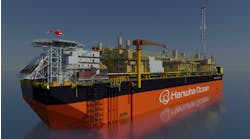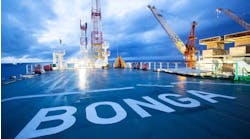New oil and gas reserves added and fluctuations in product demand are relatively hard numbers, taken into account quickly in industry economic analyses. Reserve depletion is a softer number that can change from year to year, based upon no specific activity.
Although it averages 4-5% globally, depletion in higher product price conditions (such as now) dips below the radar screen. When price conditions weaken, and new reserve additions fail to replace lifted volumes, the depletion rate looms quite large. The quick drawdown in global production volumes during the 1998-1999 period, after oil prices collapsed, were the result of hundreds of shutdown decisions on mature fields.
North Sea fields today are a good example of extremes in collective depletion booking. Producers there book depletion as a function of field shutdown or refurbishment, which in turn is a function of oil and gas prices, government policies, workover, drilling, and refurbishment costs, and equipment availability. Hence, the pressure to liberalize North Sea government policies and the industry's focus on reducing drilling and refurbishment costs there. Ongoing high operating as well as platform abandonment costs are additional considerations.
Thus, when oil prices weaken later this year, or even 2-3 years from now, watch for a fairly quick collapse in production. It's not a knee-jerk industry shutting in production, but the decision-making taking place collectively on lots of marginal fields around the globe. Depletion is a quiet statistic, but it emerges now and then and bites with thundering reality.
Ultra-deep squeeze
What makes deepwater wells expensive is the amount to time required to transit the water column and manage the equipment needed to span it: drilling risers with attached choke and kill lines; remotely operated vehicles, long umbilicals, and surface support; extra drill pipe, drilling fluid, and riser safety equipment; upper and lower marine riser packages; a greater safety margin for the wellhead, blowout preventers, and seafloor connections; and the ability to cope with a narrow fracture gradient.
The greatest cost of all, however, is the 4th and 5th generation drilling unit needed to keep the riser in tension and the vessel in position, with enough deckload left over for the pipe and fluid needed to drill the well. This advanced rig's day rate is first on the producer's cost hit list. Technical solutions appear to be coming from two directions:
- A diametrically more compact riser, made up of composites or steel-glass laminates, would be lighter and impose a smaller lateral current load, reducing the weight load on the drilling vessel at the surface.
- A dual gradient fluid system, in which powerful seafloor mud pumps circulate fluid from the seafloor to the bit, and a small riser or umbilical lifts drilled materials and formation influx to the surface.
Either or both systems, if eventually successful, could result in the wider use of less robust drilling units, possibly even 3rd or 2nd generation vessels. These technical pursuits create quite a dilemma for drilling contractors:
- Will the reduction in deckload needed in deepwater undermine the high day rate structure needed for 4th and 5th generation drilling units, possibly stranding investments?
- Do contractors sit tight on 2nd and 3rd generation drilling units, waiting for one or both technical solutions to improve utilization for their existing fleets, or do they commence upgrading to capture the higher day rates available now?
- What are the chances that reasonably useful products will emerge next year, the year after, or 5-10 years down the road? Every drilling contractor wants a newer drilling fleet - but at what risk?
Most contractors are laying low now, letting rig contracts alone drive the decision-making. The yellow light now prevailing in deepwater drilling operations is a recognition that deepwater exploitation is costlier than first anticipated, but also a signal that changes are coming.
No contractors' solution is optimal - not even the largest, or the one with the most modern fleet. Could the least modern come out ahead? Maybe, but at what cost to long-term fleet modernization.
Stranded investments are a huge risk for all contractors, but the next greatest financial threat is that of stacked rigs.
Leonard Le Blanc


